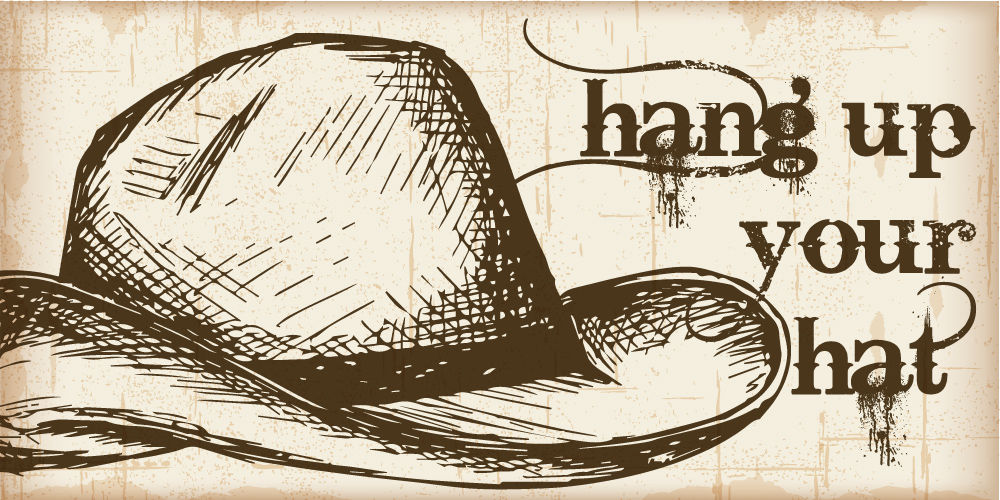The Cowboy-Doctor
I have never been into westerns, though I’ve certainly seen some of the classics with John Wayne, Clint Eastwood, and Gary Cooper. The story typically revolves around the loner cowboy—strong, independent, tough—who rides into town on his trusty steed to right a wrong, and then rides off into the sunset. The outlaws fall, the women swoon, the cowboy trudges on. It’s so ubiquitous in American culture that we often take for granted the impact the cliché has on different aspects of our country, even our health care.
Dr. Marcus Welby was a cowboy-esque physician. In the popular 60’s and 70’s TV show, Dr. Welby seemingly did it all. It was just him, his younger partner, and his dedicated nurse. He loved his patients and knew them well, and he could address all of their problems. Such has been American medicine for over a century—independent, comprehensive, omniscient, strong, cowboy-esque.
We simply cannot master it all
But medicine is different now. We have amazing imaging technologies and huge swaths of labs and medications to treat life-threatening illnesses. Research guides evidence-based diagnosis and treatment. We have realized that a physician working too many hours can be quite harmful to patients. We have a payment infrastructure that never existed for Dr. Welby. And let’s not forget patients—they are much more educated and invested in much of their health.
Medicine also tries to do more today. The social determinants of health—things such as pollution, socio-economic status, schools, the safety of neighborhoods, access to healthy food —are now oftentimes considered under the purview of health care. It is a sweeping paradigm shift.
I am a Family Physician, a specialty where we pride ourselves on comprehensiveness. I inherited the heritage of Dr. Welby, the cowboy physicians of the past, the romanticism of the country doctor who comes to your house and addresses all of your needs. That vision still affects the kind of care we deliver. One study even suggests that “cowboy” physicians significantly contribute to elevated health care costs. Why? Because we are inefficient and frequently provide unnecessary, or even harmful, care when we do it by ourselves. We are less likely to discuss palliative care, and more likely to increase the number of procedures performed.
It means I need help to deliver the best care to all my patients. I need a competent and compassionate team around me. I cannot be a solitary cowboy cleaning up the isolated messes and then move on. This is a world where it is crucial to rely on the help and expertise of others. We as physicians simply cannot master all that is needed for patient care.
The inability to master it all—that’s an uncomfortable truth described Atul Gawande in his commencement address to Harvard Medical School’s graduating class in 2011:
“The doctors of former generations lament what medicine has become. If they could start over, the surveys tell us, they wouldn’t choose the profession today. They recall a simpler past without insurance-company hassles, government regulations, malpractice litigation, not to mention nurses and doctors bearing tattoos and talking of wanting ‘balance’ in their lives. These are not the cause of their unease, however. They are symptoms of a deeper condition—which is the reality that medicine’s complexity has exceeded our individual capabilities as doctors.”
Leading care teams is not taught in physician training. We know treatment options, we have some idea of how to get there, but we aren’t formally trained in how to work with the other members of the team—the MA, the pharmacist, the nurse. The fact that leadership isn’t included formally perpetuates the perception of professional self-sufficiency.
Teams allow physicians to focus more on our strengths and talents. Physicians are trained for a very specific purpose, and—we aren’t trained to do it all. Thankfully, independent-minded physicians do not often fit the cultural cliché of the cold and detached cowboy. Physicians want what is best for their patients, and are willing to adapt when needed to provide excellent care. Well-functioning teams contribute more to positive health outcomes than do skilled clinicians. It’s time to accept this challenge.
Kyle Bradford Jones
Three years ago, an internal study found that Huntsman Cancer Institute employees experienced significant compassion fatigue. Director of Nursing Services Sue Childress teamed up with HCI executives, providers, and managers to combat burnout by promoting conscientious leadership and a culture of civility.
University of Utah’s Support Services makes learning a part of their routine. Director Dustin Banks considers his book club the most important meeting he attends. Why? Because it brings together Support Services’ diverse leadership group — customer service, hospital operators, environmental services, volunteers, interpreters and security — to learn and grow as a team.
Teaching the next generation of health care providers happens every morning in 10 minute chunks throughout the hospital. The Surgical Intensive Care Unit reimagined the physician rounds to feature the patient’s nurse, instead of the patient’s physician-student. They found that this simple change created a stronger interprofessional team and advanced nursing practice.
